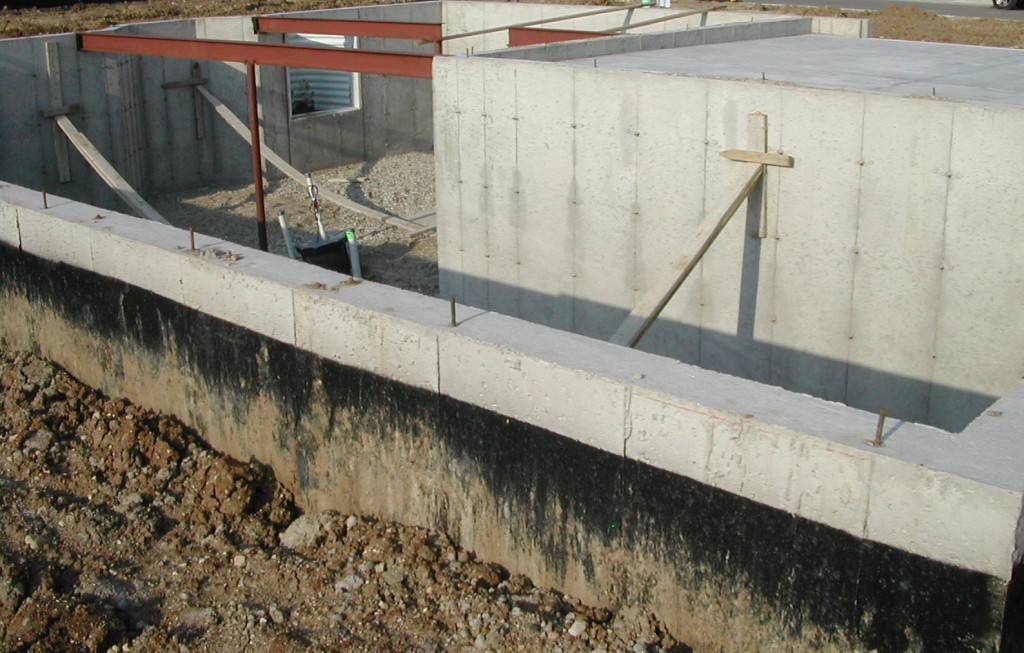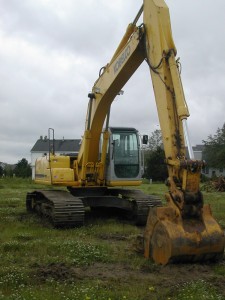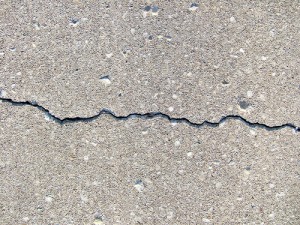Best Practices: Foundation
2 Comments | Posted by armchairbuilder in Build Your Own Home, Owner-Builder, Quality Check
The foundation for your new home or addition is a huge component of your new owner-built project. If you get it right, the rest of the project will go so much more smoothly. Here we will describe best practices as it relates to poured concrete foundation walls (basement condition).
Proper Cure: Three words. Don’t rush it. Make sure you let the walls cure a minimum of seven days before backfill operations begin. The concrete needs time to gain strength in the hydration process. The only way to do this is with time (and admixtures but that’s a topic for another post). The cure time is affected by temperature so allow for additional time in cold weather. We typically add the cure time into our foundation schedule…anywhere from seven to fourteen days.
Brace For Backfill: Backfill operations put a tremendous amount of force on a new foundation wall. The lateral pressure of the soil, moisture, and bulldozer can easily damage longer foundation walls if not protected. The best way to protect your new walls is to brace them as shown in this photo. Remember, once the house is framed, the floor framing acts as a brace to support the top of the wall. The framing counteracts the force from the soil and hydrostatic pressure (moisture next to the wall). So until the house is framed, we need to temporarily brace the foundation wall. If possible, you will also want to pour the basement floor before backfill as this helps brace the bottom of the foundation wall. I have seen in rare circumstances, foundation walls move off the footer during backfill when no basement floor was in place.
Heavy Equipment: A good, seasoned heavy equipment operator will know the best practices for backfill operations of a new home foundation. However, it doesn’t hurt to clarify prior to the start and include a note in your signed scopes of work as well. Never, never, never should a bulldozer or excavator (shown in picture) operate in the area being backfilled (a.k.a. overdig area). The dozer or excavator tracks should stay on the virgin ground which is typically 3-4′ from the foundation. The typical heavy equipment that is used to backfill a home foundation can weigh anywhere from 40k to 50k lbs (examples = Caterpillar 963D Loader or 320D hydraulic excavator). Considering the average car weighs about 3000 pounds, the backfill equipment weighs the equivalent of fourteen or fifteen cars! This weight is transfered to the soil beneath the machine and is then placed on the new foundation wall if the machine is too close.
Why Bother?: What if you don’t follow these best practices? The worst case scenario if you don’t follow these best practices…your foundation wall fails and falls into the basement. Trust me, this can happen and it is very expensive to repair. The best case scenario if you don’t follow the best practices…you get cracks in your wall that may open up and leak in the future. For more best practices to use during the construction of your new home, check out The Builder’s Daily Construction Guide, in the Resources section of our main site, which gives the person managing your schedule the critical quality checks required during the building of your dream home.
2 Comments for Best Practices: Foundation
iphone 5 | November 2, 2011 at 11:13 pm
Backfilling Your New Home Foundation. Quality considerations...- Armchair Builder :: Blog :: Build, renovate, & repair your own home. Save money as an owner-builder. | April 1, 2013 at 2:47 pm
[…] Brace Basement Foundation Walls – Basement walls have a tremendous amount of pressure placed on them from the soil and water (also called hydrostatic pressure) outside. Once the house is built, the first floor framing provides lateral pressure at the top of the foundation wall to counteract the force from the outside. The basement floor provides additional support for the foundation wall at the bottom. Unfortunately, the basement floor and first floor framing aren’t typically installed yet when backfilling occurs. So, it’s important to temporarily brace the foundation wall. If you’d like to see a foundation properly braced, check out this article: Best Practices: Foundation. […]





Excellent line up. We are going to be linking to this fantastic report on our internet site. Sustain the great creating.